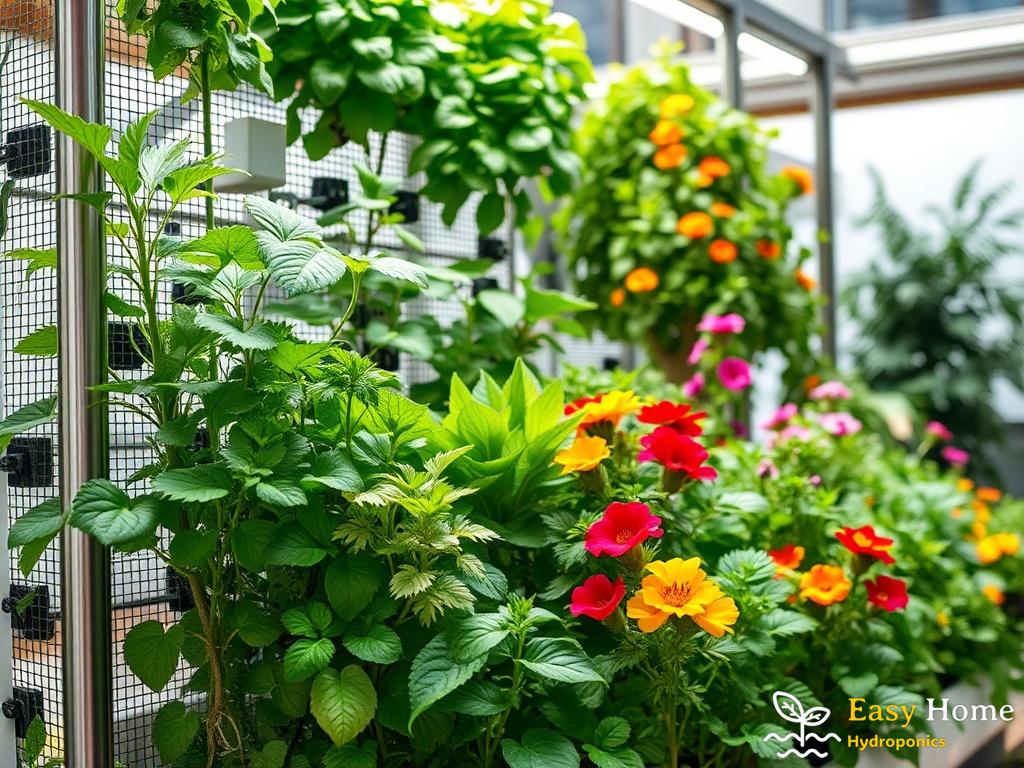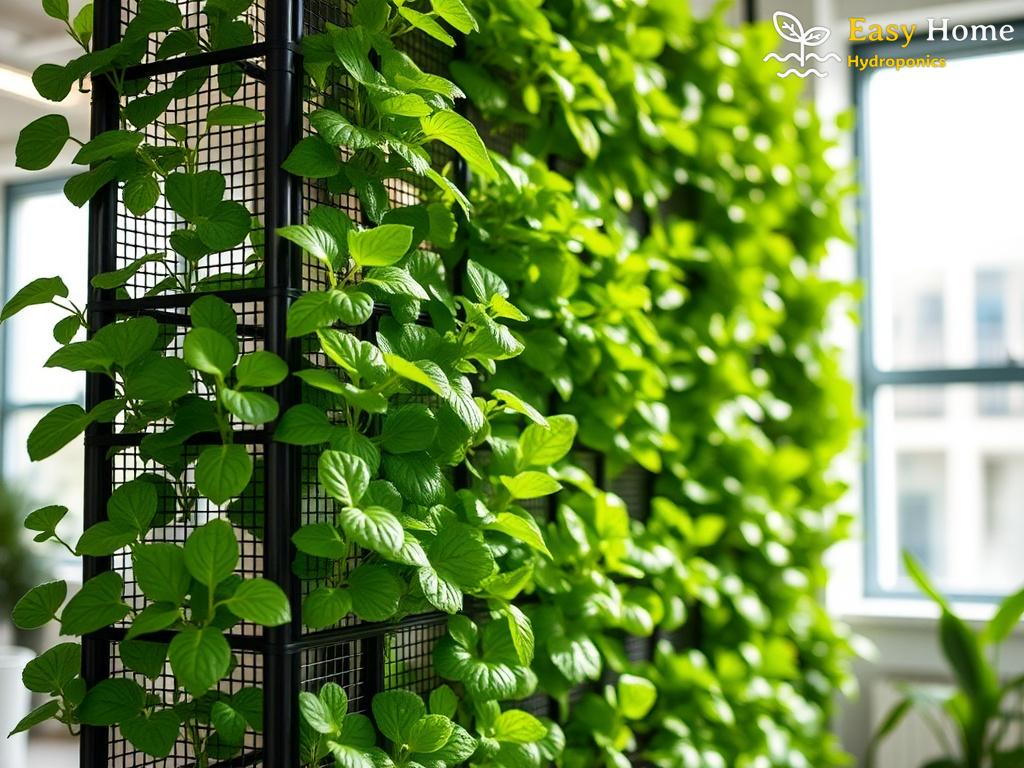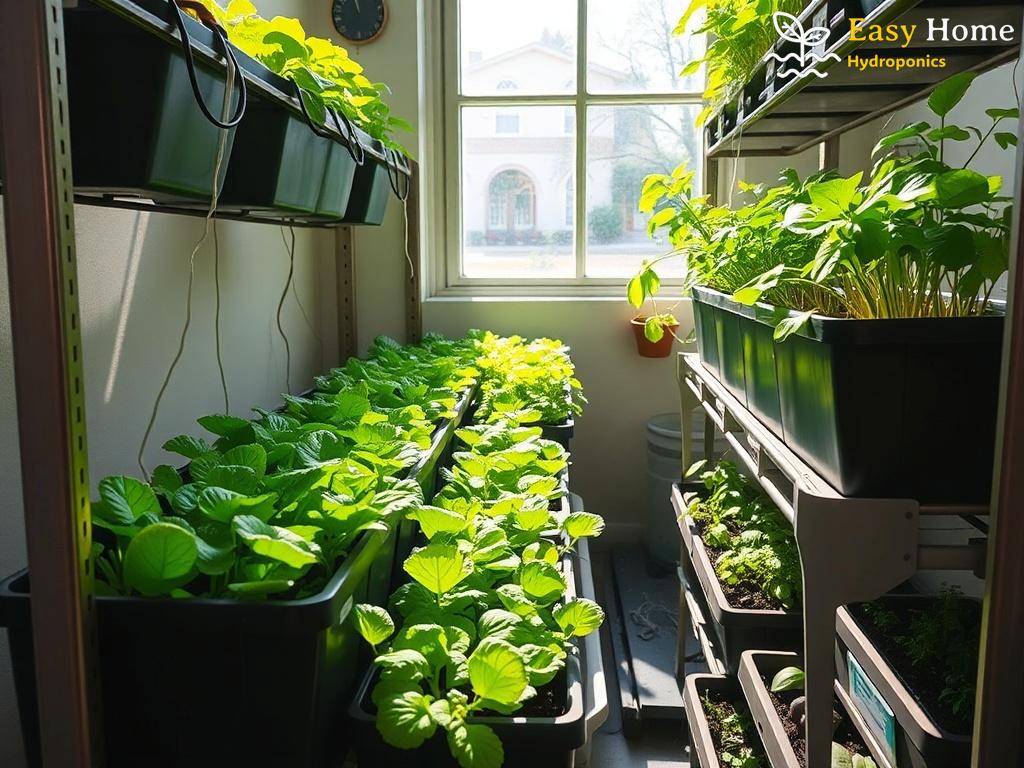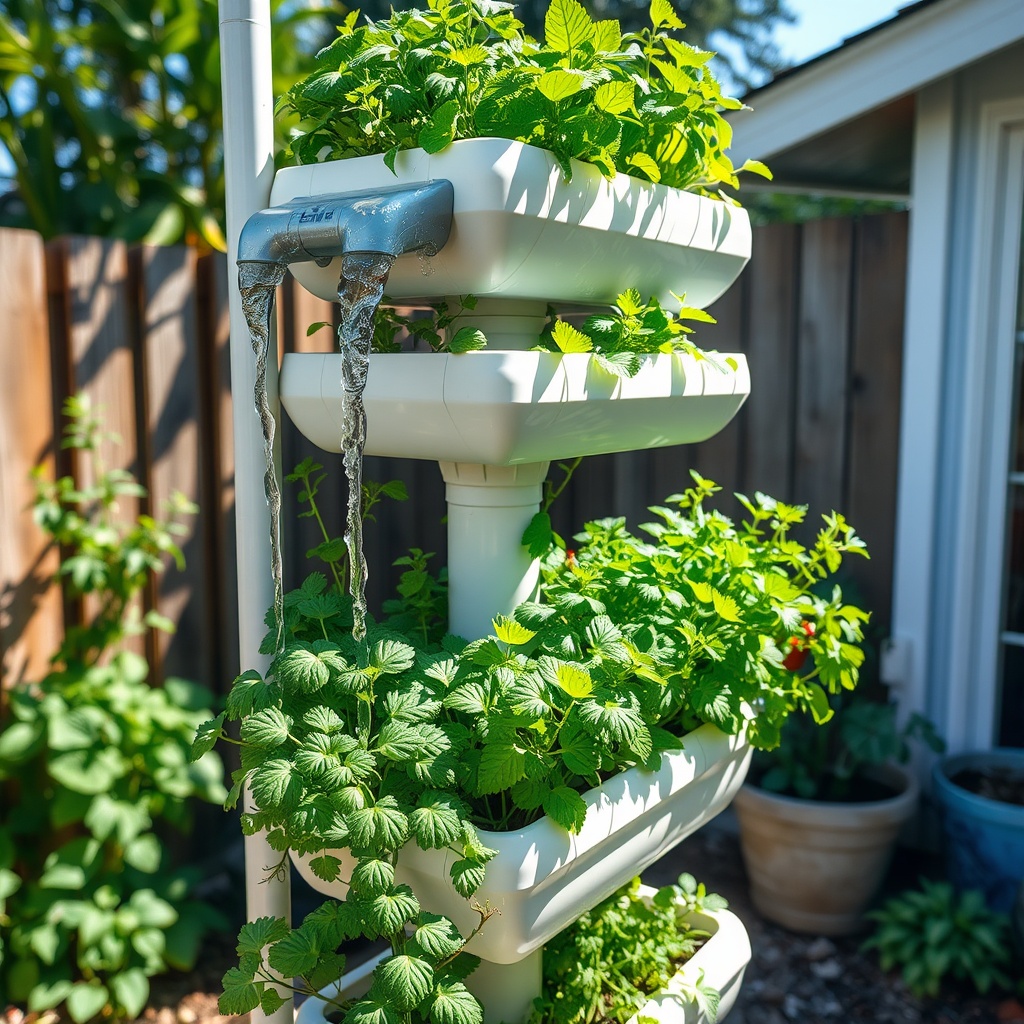Choosing the Right Mesh Panels

The backbone of any vertical hydroponic garden is undoubtedly the mesh panels you choose. But what exactly should you look for in a mesh panel? Materials vary widely, and understanding their properties can be the key to your garden’s success. Whether it’s durability, water resistance, or UV protection, each material offers unique benefits that can influence plant growth and maintenance.
Common Materials Used in Mesh Panels:
- Plastic Mesh: Lightweight and resistant to moisture, this type is perfect for indoor gardens.
- Metal Mesh: Offers superior durability but can corrode if not treated properly; ideal for outdoor use.
- Composite Mesh: A blend of plastic and metal, combining benefits from both materials.
When selecting the perfect mesh panels, it’s crucial to consider several key features that will directly impact the efficiency of your hydroponic system. From the size of the mesh openings to the panel thickness, each element plays a pivotal role in the overall performance of your garden.
| Feature | Importance | Recommendation |
|---|---|---|
| Mesh Size | Ensures proper drainage and airflow | 1/4 inch or smaller for most plants |
| UV Resistance | Prevents degradation from sunlight | Look for panels rated for outdoor use |
| Weight Capacity | Supports the weight of growing plants | Choose panels rated for at least 20 lbs |
The design of your vertical hydroponic garden can vary significantly based on the type of mesh panels you choose. Some panels offer flexibility in installation, allowing for creative vertical layouts, while others are rigid and designed for specific configurations. Understanding these design aspects will help you maximize your space and enhance your gardening experience.
Consider factors such as panel orientation, spacing, and plant types when planning your vertical garden. With the right mesh panels, you can create an aesthetically pleasing, efficient, and productive hydroponic setup that not only saves space but also showcases your plants in a beautiful way.
Step-by-Step Assembly Guide
Before diving into the assembly, it’s essential to ensure you have all the necessary materials on hand. The right tools and components pave the way for a seamless construction process, allowing you to focus on your plants rather than troubleshooting. Here’s a brief overview of what you’ll need:
- Mesh panels (of your chosen material)
- Supporting framework (PVC pipes or wooden beams)
- Water reservoir
- Pumps and tubing
- Growing medium (such as rock wool or clay pellets)
- Plants or seeds
With these essentials ready, you’re set to embark on your hydroponic journey!
The framework is the skeleton of your vertical hydroponic garden, providing stability and support for your mesh panels. Depending on the space available, you can decide on the height and width of your setup. For an effective assembly, follow these steps:
- Measure and Cut: Determine the dimensions based on your available space and cut your supporting material accordingly.
- Assemble the Base: Create a solid base that can handle the weight of your plants and water. Ensure it’s level and stable.
- Vertical Supports: Attach vertical supports to the base, ensuring they are securely anchored.
- Install Mesh Panels: Affix the chosen mesh panels to your framework, ensuring they are evenly spaced and securely fastened.
This methodical approach guarantees a sturdy structure that will withstand the rigors of a growing garden.
With your framework in place, it’s time to bring your hydroponic system to life! This stage is where the magic happens, transforming your garden into a thriving ecosystem. Follow these steps to effectively set up your system:
- Water Reservoir: Position your water reservoir at the base of your structure, ensuring easy access for refills.
- Pump Installation: Connect your pump to the reservoir and run tubing to each mesh panel, ensuring even distribution of nutrients.
- Growing Medium: Fill the mesh panels with your chosen growing medium, providing a stable environment for your plants.
- Planting: Finally, plant your selected crops or seeds, ensuring they are appropriately spaced for optimal growth.
Congratulations! With these steps completed, your vertical hydroponic garden is ready to flourish. Monitor your system regularly to ensure plants receive the right amount of nutrients and support as they grow. Happy gardening!
Optimal Plant Selection for Hydroponics

Choosing the right plants is just as critical as selecting the ideal mesh panels for your vertical hydroponic garden. The success of your garden depends on how well the chosen plants adapt to the hydroponic system and thrive within the environment you’ve created. Understanding the characteristics of different plant species will not only enhance your gardening experience but also ensure a bountiful harvest. Let’s delve into the fascinating world of plant selection that complements your hydroponic setup.
When embarking on your hydroponic journey, compatibility between the plants and the hydroponic system is paramount. Certain plants are more suited for hydroponics due to their growth patterns and nutrient requirements. Leafy greens like lettuce, spinach, and kale are excellent choices as they flourish in nutrient-rich water and have a relatively short growth cycle. These plants not only grow rapidly but also require minimal space, making them perfect candidates for vertical gardens.
On the other hand, herbs such as basil, parsley, and cilantro thrive exceptionally well in these systems too. Their compact sizes and fast growth rates allow for efficient use of the vertical space, ensuring that your garden remains both productive and visually appealing. The careful selection of plants that complement each other will create a harmonious ecosystem, maximizing your garden’s potential.
Understanding the growth rates and harvest cycles of your selected plants is essential for a successful hydroponic garden. Fast-growing plants allow for multiple harvests throughout the year, providing a continuous supply of fresh produce. For instance, plants like radishes and microgreens can be harvested within weeks, enabling you to enjoy the fruits of your labor sooner than anticipated.
Conversely, if you’re looking to cultivate larger crops such as tomatoes or peppers, it’s crucial to be aware of their longer growth cycles. These plants require more space and support, and while they may take longer to mature, the rewards are well worth the wait. By strategically mixing fast and slow growers, you can create a dynamic garden that offers both immediate gratification and long-term harvests.
Ultimately, the journey of constructing your vertical hydroponic garden is not just about the structure but also about the beautiful plants that will inhabit it. By making informed decisions regarding plant selection, you’ll enhance the aesthetics and productivity of your garden, ensuring it becomes a thriving oasis of greenery.
Maintaining Your Vertical Garden
Once your vertical hydroponic garden is set up, the journey doesn’t end there; it truly begins! Maintaining your garden is crucial to ensure it thrives and produces bountiful yields. Regular care not only keeps your plants healthy but also enhances the efficiency of your hydroponic system. Here’s how you can master the art of maintenance, turning your garden into a flourishing green haven.
One of the most vital aspects of maintaining your vertical garden is monitoring the water levels and ensuring that your plants receive the right nutrients. Hydroponic systems rely on a nutrient-rich solution for growth, and it’s essential to check the pH levels and nutrient concentration regularly. A balanced pH, ideally between 5.5 and 6.5, promotes optimal nutrient absorption by your plants. To ensure this, use a pH meter and nutrient testing kits to keep track of your solution’s health. Additionally, remember to replace the nutrient solution every two weeks to prevent buildup of salts that could harm your plants.
As your plants grow, they may become crowded or develop unhealthy leaves. Pruning is a critical maintenance practice that promotes better air circulation and light penetration. Regularly inspect your plants and remove any dead or yellowing leaves, which can be a sign of disease or nutrient deficiencies. This not only enhances the growth potential of the remaining foliage but also prevents pests from taking hold. When it comes to harvesting, use sharp, clean scissors to cut your crops, ensuring minimal stress on the plants. This practice encourages continuous growth and can lead to higher yields. Keeping track of harvest cycles will help you plan for future plantings, ensuring a consistent supply of fresh produce.
Even in a controlled hydroponic environment, pests can still pose a significant threat to your vertical garden. Regular inspections are essential, as early detection can save your crops. Use organic pest control methods, such as insecticidal soaps or neem oil, to combat infestations without harming your plants. Furthermore, consider implementing companion planting strategies, where certain plants are grown together to deter pests naturally. Beyond pests, ensure your vertical garden is positioned to receive adequate light and air circulation. If your garden is indoors, invest in grow lights to supplement natural sunlight. Proper ventilation is also vital, as it helps to maintain humidity levels and prevent fungal diseases.
By embracing a proactive approach to maintenance, you ensure that your vertical hydroponic garden not only survives but thrives. With consistent care and attention, your garden will transform into a lush, productive oasis that continuously delights your senses and nourishes your body.
Troubleshooting Common Issues
As you nurture your vertical hydroponic garden, it’s not uncommon to encounter nutrient and pH imbalances that can hinder plant growth. Recognizing the signs early can save your crops from potential disaster. If leaves appear yellow or stunted, it may indicate a nitrogen deficiency, while browning leaf edges often suggest an excess of nutrients. Regularly testing your nutrient solution’s pH level is crucial; an optimal range between 5.5 and 6.5 ensures your plants absorb nutrients effectively. Adjusting the pH is straightforward with pH up or down solutions, but remember to make gradual changes to avoid shocking your plants.
Water management is a cornerstone of hydroponic success, yet it can be a source of frustration when problems arise. Overwatering can lead to root rot, while insufficient water can cause plants to wilt. Observing your plants closely will provide clues; if they are drooping or turning brown, it may be time to reassess your watering schedule. A well-designed system that promotes adequate aeration is key—ensure that your pump is functioning optimally and that water is reaching all mesh panels evenly. If you notice stagnation, consider adjusting the water flow rate or adding more air stones to boost oxygen levels in the nutrient solution.
Even the most well-planned vertical gardens can fall victim to pest infestations. Regular inspections are essential in spotting unwanted guests like aphids or spider mites before they wreak havoc. Implementing a proactive approach, such as introducing beneficial insects or using organic pesticides, can help maintain a healthy ecosystem. Furthermore, be mindful of your garden’s environmental conditions. Factors such as light exposure and humidity play significant roles in plant health. If plants appear leggy or discolored, consider repositioning them to receive more natural light or investing in supplemental grow lights. Maintaining optimal humidity levels, ideally between 40-60%, can also prevent fungal diseases from taking hold.




